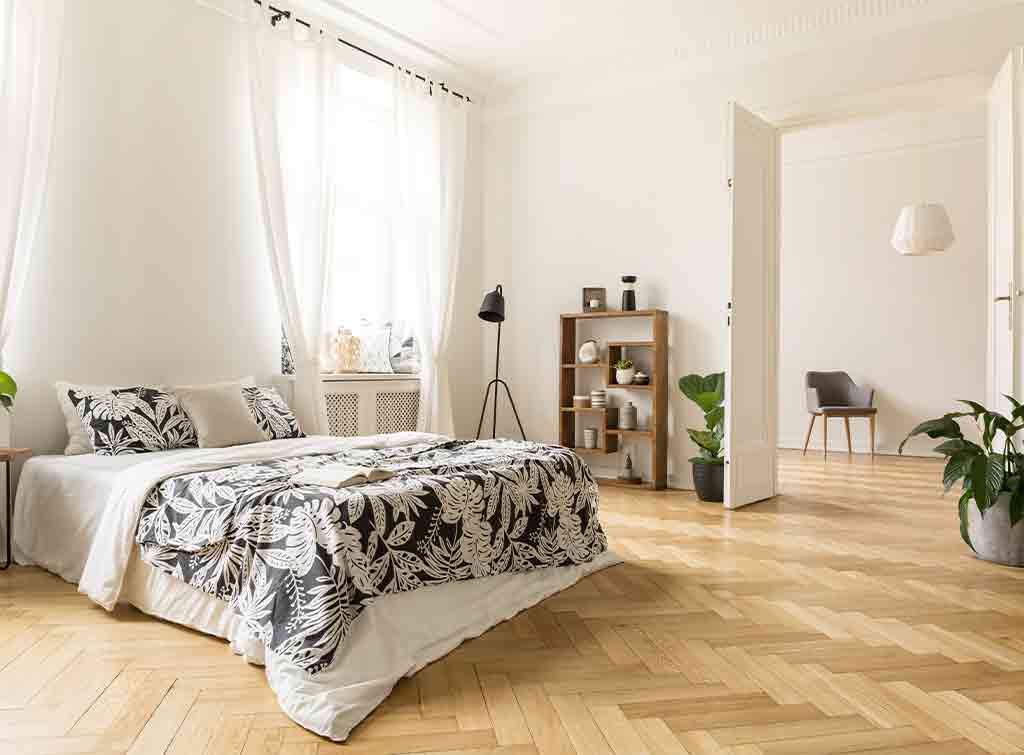Blog>Expert Advice>What type of wood flooring is best?
Last updated: 8 November 2024
What type of wood flooring is best?
Ready for new wood flooring but not sure where to start? From modern laminates to solid oak planks, our expert guide will help you decide what type of wood flooring is best for you.
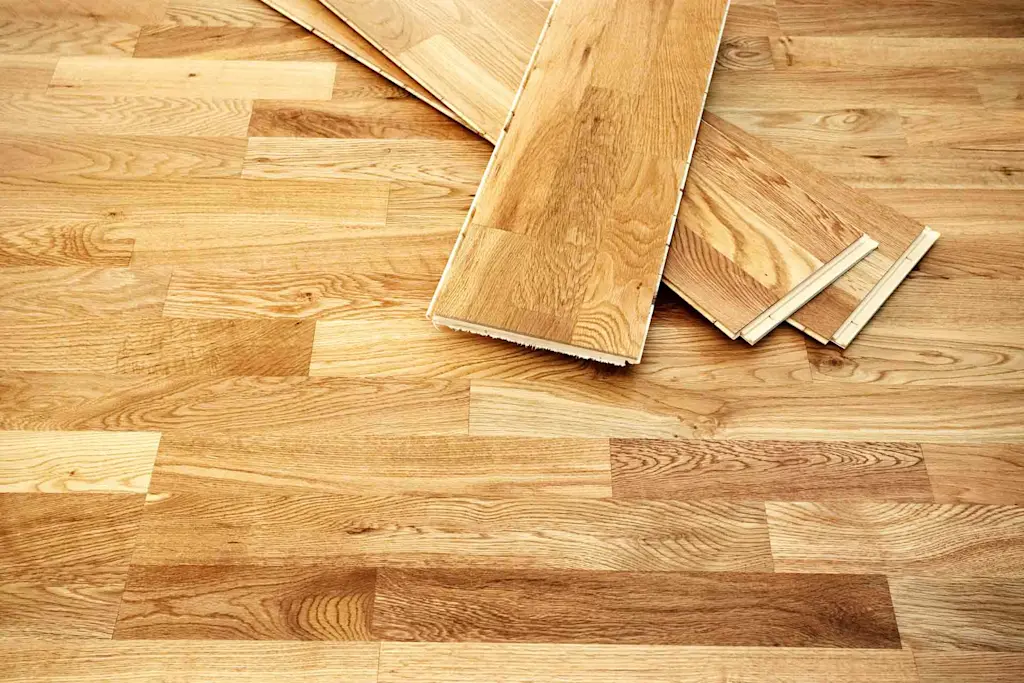

Lara Sargent
Lara loves writing about every aspect of the home – from the latest colour trends to emerging designs. She has a lot of experience writing about home trends and interior advice for leading titles such as The Telegraph, Metro, and Homes & Gardens.
What type of wood flooring is best?
Warm, practical and comfortable underfoot, wood flooring remains a popular choice for homeowners. But with so many different options available, what type of wood flooring is best for you?
It's easy to feel bewildered with so many real woods and faux woods on offer. But we're here to help you choose the right material for your home and your budget.
Let's take a deep dive into the pros and cons of laminate, hardwood and engineered wood floors.
See the tradespeople we've checked and recommend for your job
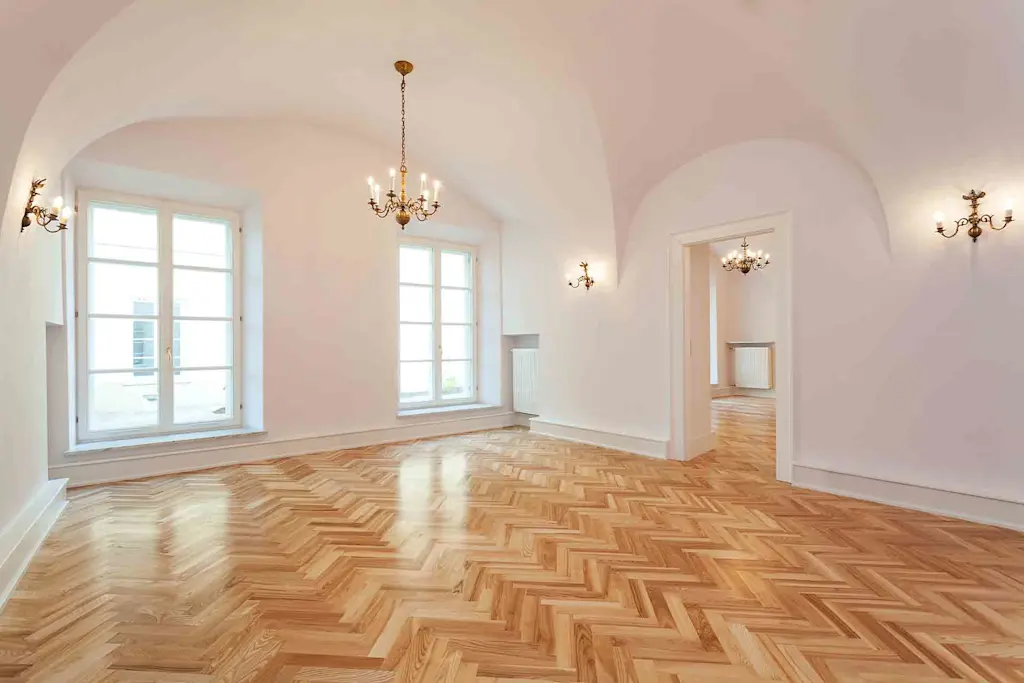
Laminate wood flooring: pros and cons
Laminate flooring is crafted from a compressed fibreboard plank, layered with a photographic image of wood and a protective resin topcoat.
Key points to consider:
If you're working to a tight budget, laminate wood flooring is the most affordable option
Laminate wood flooring is also easy to install and can last a long time
Look out for different qualities and buy the best laminate wood flooring you can afford
The edges of some laminate floorboards have a slight bevel to create a more realistic look. This also helps to avoid any swelling from moisture that might get in
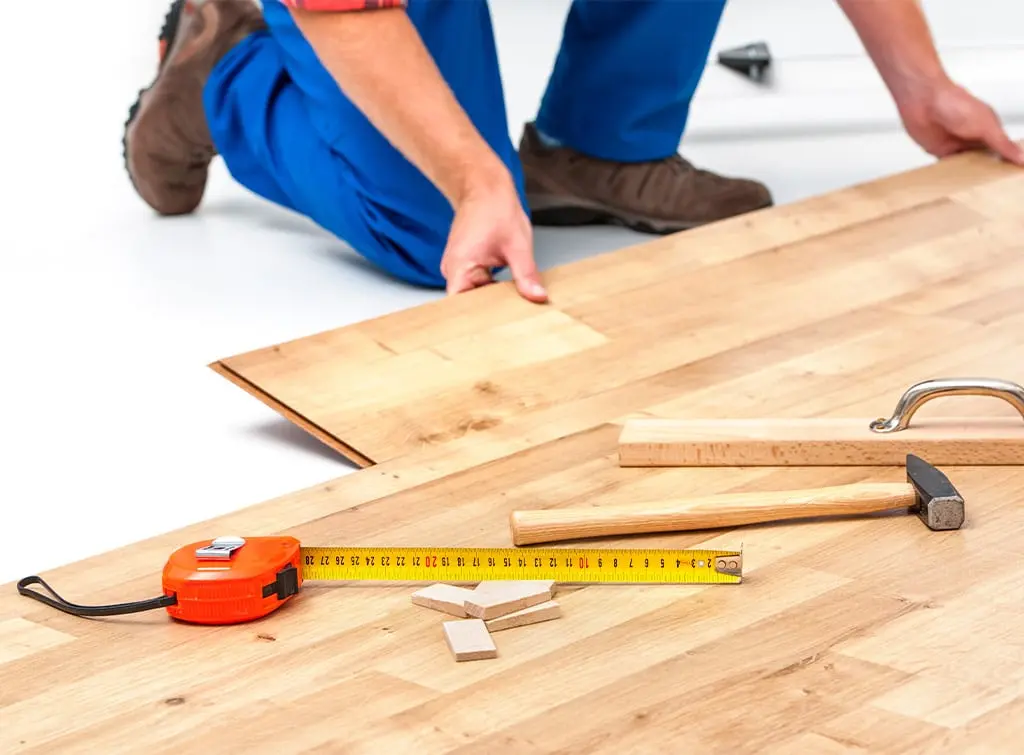
Here's a handy at-a-glance list of the pros and cons:
Pros
Cost-effective
Laminate wood effect floors are a fantastic alternative to more expensive hardwood flooring. After all, it looks like the real thing but can bought at a fraction of the cost.
Hardwearing
Laminate flooring is tough and scratch-resistant, so perfect for busy homes with children and pets. Look out for the AC rating that tells you how strong it is - AC 5 is the highest rating.
Low maintenance
Laminate floors are really easy to maintain. Simply mop with a specialist floor cleaner to get laminate looking its best. Avoid using too much water as you don't want to risk moisture damage.
Good looking
From classic oak to dark walnut and chevron patterns, laminate wood flooring offers a look for every decor.
Easy to install
Laminate is generally quick and easy to install, as it usually just clicks and locks into place. Most of the time, you can simply lay laminate as a floating floor, which means it won’t be fixed to the subfloor with adhesive. You may still need to level your subfloor first using screed.
Versatile
Laminate wood floors are extremely versatile and work in any room of the house – although you should make sure it’s rated AC 5 if you want to use laminate in the bathroom. It’s even suitable for use with underfloor heating and will cope with all kinds of furniture on top of it.
Cons
Less authentic
While laminate flooring is designed to look and feel like wood, it's not the real thing. So if you're after true authentic wood underfoot, only real wood flooring will do.
Lifespan
Laminate has a long lifespan of 15-25 years, which is great. However, real wood can last even longer as you can sand and refinish it.
More difficult to repair or replace
Laminate joins can wear over time and poorly laid laminate can be difficult to replace. Although laminate flooring is difficult to scratch or dent, you won't be able to refinish it if it does get damaged.
Find out how to lay laminate flooring in our handy guide.
However, if you are not confident with your DIY skills, hiring a tradesperson to lay your laminate flooring is a very wise decision. This will eliminate any risk of damaging your home plus you can guarantee a professional result.
For ballpark costs, check out our helpful guide on laminate flooring fitting costs.
See the tradespeople we've checked and recommend for your job
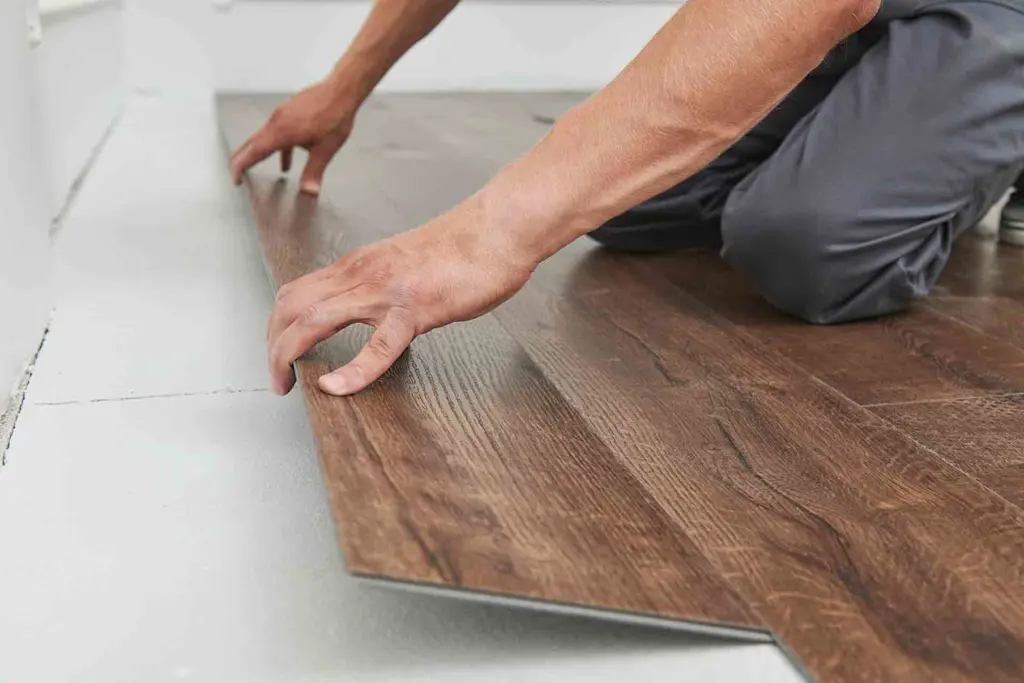
Hardwood flooring: pros and cons
Hardwood or solid wood floors will never date. Whether you opt for the rich tones of walnut or a Scandi-inspired palette of silvery wood, the best wood flooring provides the perfect foundation for your home.
Key points to consider:
Each board is made from a single piece of wood, typically 18-20mm thick but available in a variety of widths to suit your look
It's crucial to buy from companies that source wood from sustainable forests, certified by the FSC (Forestry Stewardship Council) which monitors forest management, particularly endangered species
There are many species of timber used for hardwood floors, each with their own qualities and properties
Popular woods include oak, maple and teak - for a deep dive into the pros and cons of different species, head to our pros and cons of hardwood flooring guide
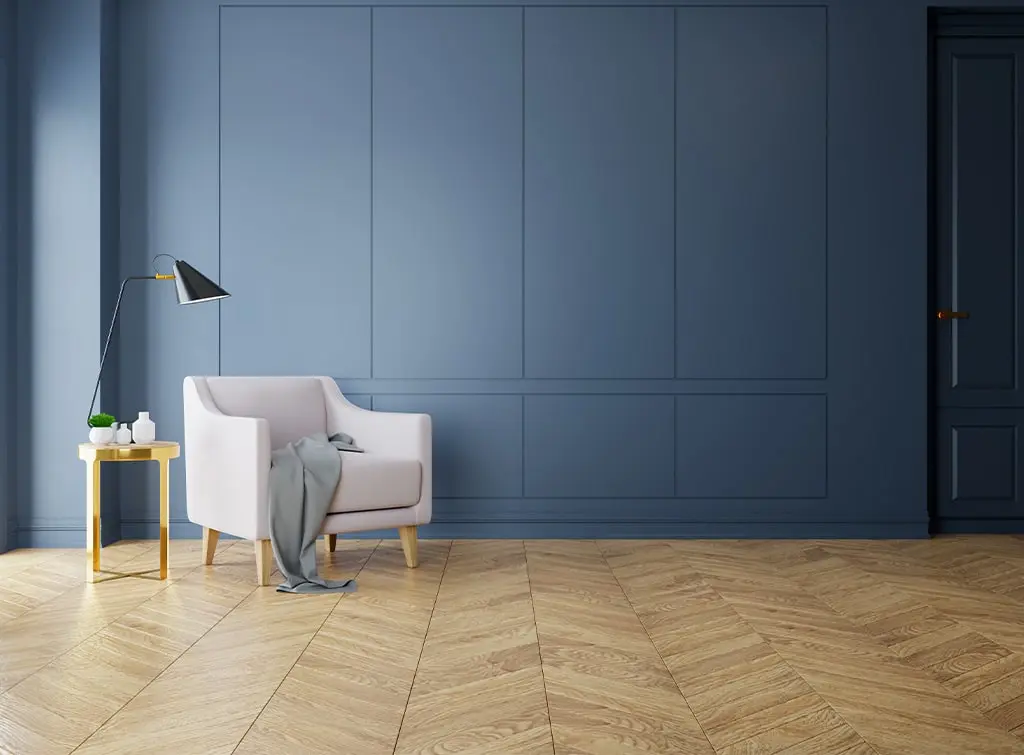
Here's a handy at-a-glance list of the pros and cons:
Pros
Visually stunning
Hardwood floors can create a visually stunning backdrop throughout your home. Knots, grains and attractive patterns can add to the character of a space.
Versatile
From knotty oak to pale maple, hardwood flooring is available in all kinds of species, shades and textures. It looks amazing in both traditional and contemporary homes and can be easily stained in your preferred shade.
Increase the value of your home
Solid wood flooring has a classic look and feel that appeals to buyers if you decide to sell your home.
Can be easily repaired
Hardwood flooring can be sanded back and sealed to restore the finish. The number of times you can do this is determined by how deep the tongue is set from the top of the board.
Long-lasting
Hardwood floors and tough and durable. Some species can last for a lifetime if properly maintained.
Easy to maintain
Hardwood floors are easy to clean and disinfect. Ask about factory-applied seals to make the wood highly wear-resistant with a smooth, easy-to-clean hygienic surface.
Health benefits
Hardwood flooring is the safest and least toxic flooring you can have. It doesn't use any toxic chemicals and won't harbour any dust or mites. In this way, it can improve air quality in your home - a key point for allergy sufferers.
Cons
Higher price tag
Hardwood flooring is more expensive to buy and install. Reclaimed solid wood flooring is charming, eco-friendly and gives a sense of depth of history. However these come at a greater cost.
Harder to install
Solid wood flooring can take great skill to install properly. So you'll need to factor in the price of a professional to do the job for you. Hardwood flooring is usually glued or nailed down so you may need a plywood sub-floor first.
Variations in colour
Being a natural material, wood planks will vary a little in colour, but some more than others. So think about whether you want a uniform look or a set of planks with a range of light and heavy grains.
Can be damaged by moisture
Water and humidity can cause significant structural damage to hardwood flooring. So it's best avoided in a bathroom or rooms with a high risk of spills and flooding.
See the tradespeople we've checked and recommend for your job
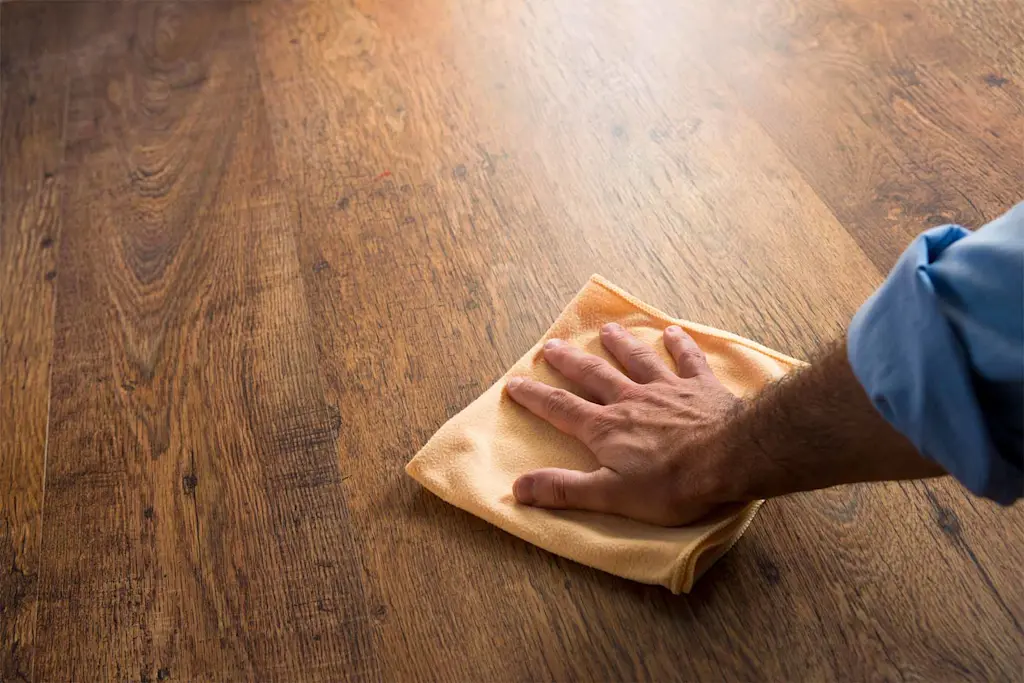
Engineered wood flooring: pros and cons
If you love the appearance of wood flooring but not the high price tag, engineered wood flooring may be a great alternative.
Key points to consider:
Unlike laminate, the best engineered wood flooring consists of three or four layers of wood, glued together to create a plank around 14mm thick
The multi-layered construction is made up of a thin layer of real wood on top of plywood
Engineered wood flooring is sometimes available with click-lock installation, which doesn't require any adhesive
Tongue-and-groove versions need to be glued into place
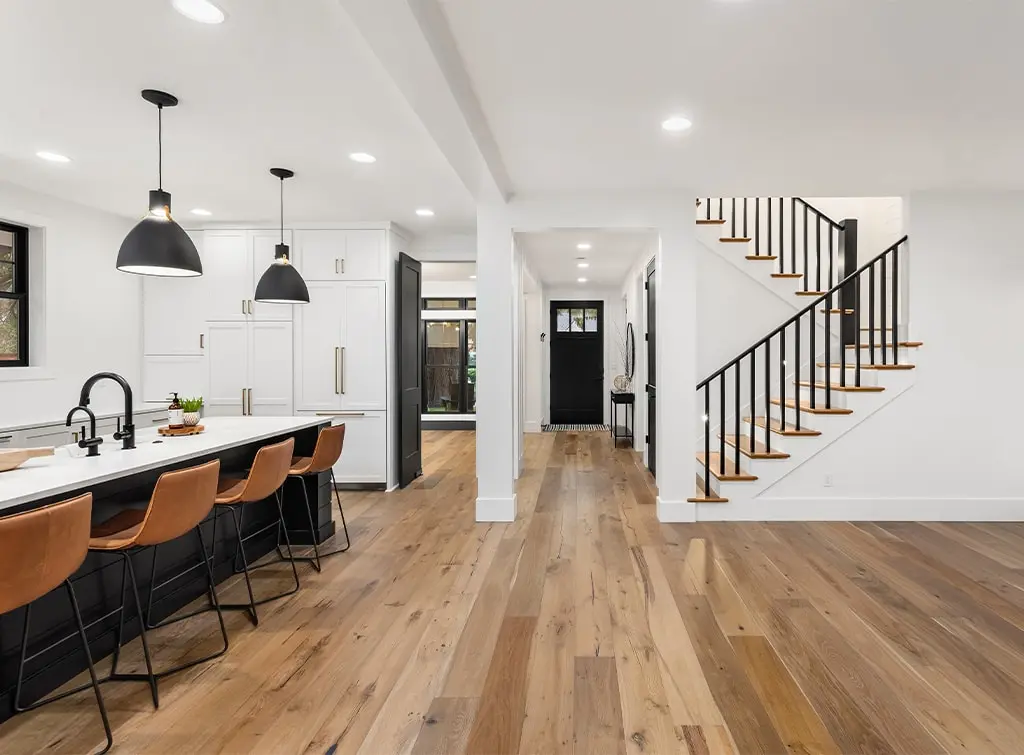
Here's a handy at-a-glance list of the pros and cons:
Pros
Durability
Engineered wood looks like solid wood, but has hidden layers to make it extra robust. It can withstand considerable bending or distorting in temperature or humidity changes. This makes it perfect for underfloor heating - unlike hardwoods where significant movement and warping can occur.
Cost-effective
Engineered wood flooring is typically cheaper than solid wood and just as versatile and robust. Solid wood also takes longer to install which will cost you more.
Easy installation
Engineered wood flooring is simple to lay with an easy tongue and groove system. For a super professional finish, check out our guide to finding good wood flooring fitters.
Long lifespan
Engineered boards can be sanded down to get rid of old scuff marks. But you'll need to pick products with thicker top layers of real wood veneer.
Low-maintenance
This flooring is easy to clean with a vacuum cleaner and a damp mop. Although engineered flooring is less susceptible to moisture damage than hardwood, you should avoid using too much water when cleaning.
Extra soundproofing
Engineered boards provide extra soundproofing due to their construction and solidity. They also offer low toxicity, similar to hardwood floors.
Cons
Repair possibilities
Each time you sand back wood flooring, you remove about 1mm of wood. So, a 20mm thick hardwood floor can be sanded back many times. In contrast, an engineered wood floor with a 4mm or 5mm thick top layer can only be refinished a few times.
Cost
It's generally more expensive than laminate floors and harder to install - using a professional floor fitter will bump up the overall price.
Still requires maintenance
Engineered wood flooring can still fade or scratch like hardwood flooring. Cheap materials can also create weak and unstable floors. So always do your homework to find a good quality supplier.
Limited water resistance
Engineered wood flooring might not be the best fit for wet conditions, such as bathrooms. Alternatives like laminate and LVT are more water-resistant.
How much does wood flooring cost?
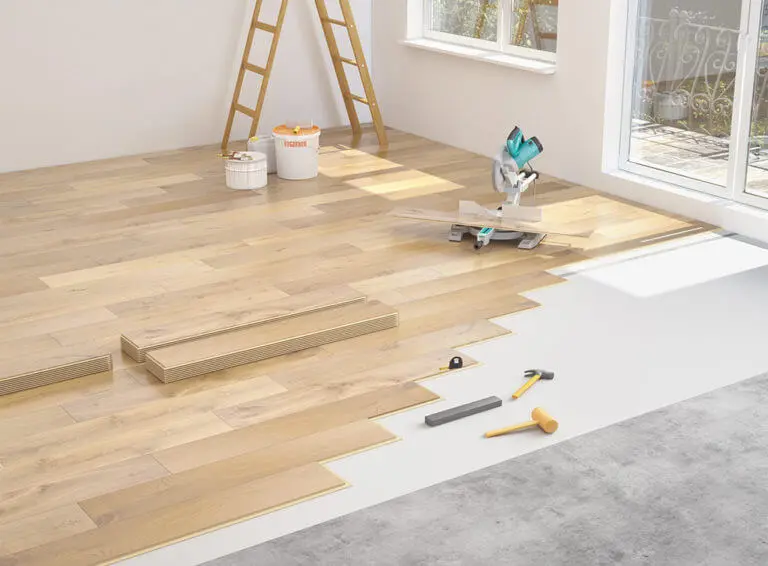
If you’re hoping to get wooden flooring installed in your home, here's an outline of the various costs of different materials to help you budget for the job.
Laminate
Wood laminate is one of the most popular types of laminate flooring in the UK.
The average prices for the supply and installation of wood laminate flooring vary and depend on several factors. These include the size and shape of the room being covered and the type, thickness and quality of the laminate you choose.
You also need to factor in the amount of prep work and finishes needed (e.g. floor levelling, skirting boards etc.) and where you live (expect to pay more in London).
Walnut laminate costs roughly £30 - £60 per m², for materials and labour
Oak laminate costs around £30 - £80 per m²
The cost of installing maple laminate flooring is around £35 - £105 per m²
One of the more expensive wood laminate flooring options is elm, which costs £37 - £125 per m² for supply and installation
Hardwood
Real wood flooring is durable, long-lasting and versatile. However, the cost of real wood flooring is dictated by the size, style and species of the wood being installed, as well as the complexity of the project.
The cost of fitting hardwood flooring is more expensive than engineered wood floor installations, which are cheaper and easier to install.
When it comes to installation, the average solid wood flooring cost is £35 per m².
However, you'll also need to factor in the cost of materials. For a high-end hardwood, you're looking at around £80+ per m².
Engineered wood
Engineered wood flooring typically costs less than solid wood and is just as versatile and robust.
When you’re calculating the cost to install an engineered wood floor, you’ll need to factor in both the cost of the flooring itself and the cost for installation.
It normally costs £45per m²to buy engineered wood flooring. Then, you can generally expect to spend £50per m² for installation.
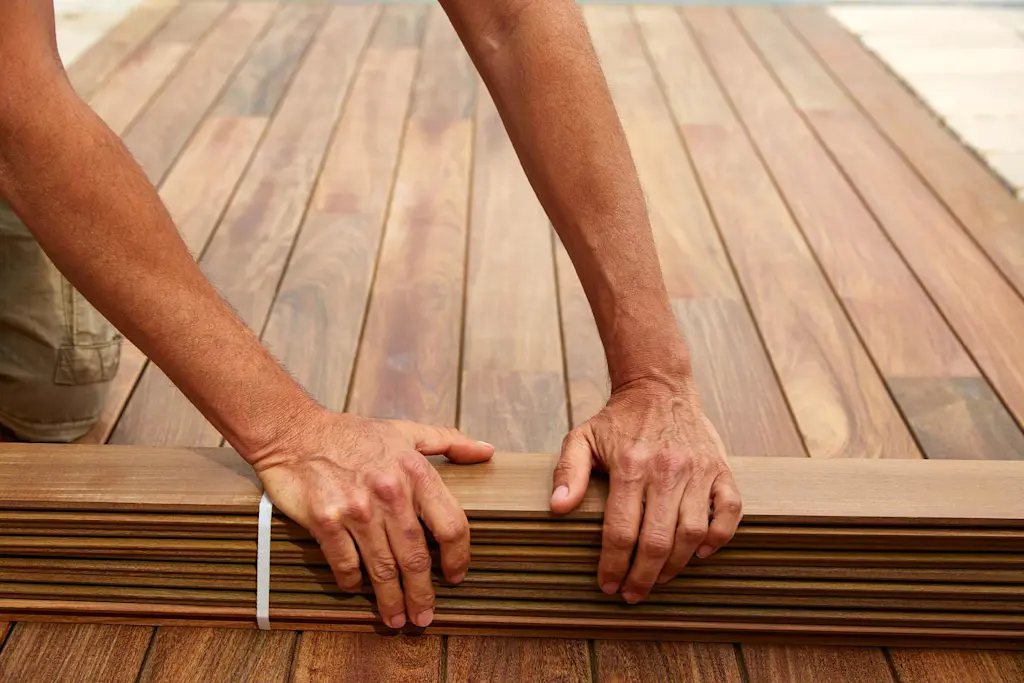
Why hire a wooden flooring specialist?
Hiring a wooden floor specialist comes with a whole host of benefits. Here are just a few.
1. Professional finish
A wooden flooring specialist will have the tools, knowledge, and experience needed to make sure your wooden floor is installed or restored to a high standard. So you’ll know your flooring is in safe hands.
Plus, you can be confident that you won’t need to invest in expensive repairs or replacements any time soon.
2. Expertise
A wooden floor specialist will be able to advise you on every aspect of your project. They can recommend the best type of wood floor for your needs, make sure that the sub-floor is prepared properly, and even give you tips on how to look after your new flooring.
3. Save hassle
Wooden floor specialists know what they’re doing and will be able to install your floor quickly and efficiently. In this way, you can save yourself time, energy, and stress.
Just sit back, relax, and let the experts take care of it for you.
Now we've explored all the pros and cons of each wood flooring type, you're ready to go ahead with your new flooring project.
Pop your postcode in the search bar below and find expert flooring specialists we recommend in your area.
See the tradespeople we've checked and recommend for your job
More Expert Advice Articles
More Flooring Specialist Articles
See the tradespeople we've checked and recommend for your job





